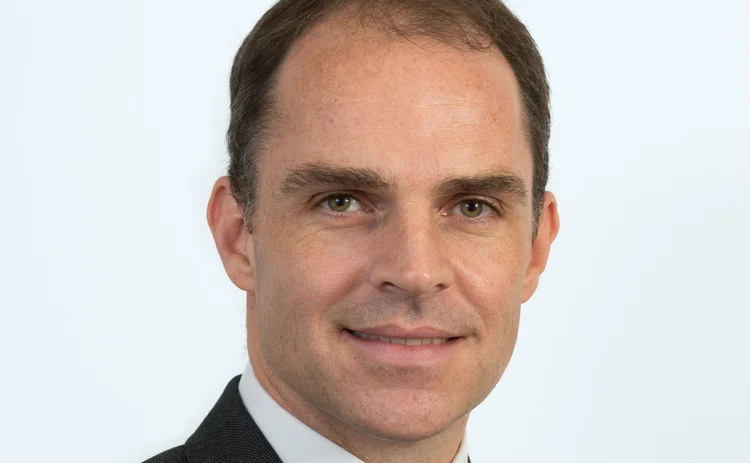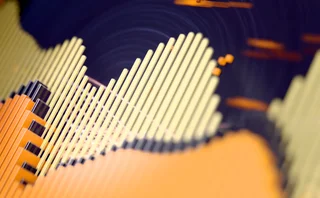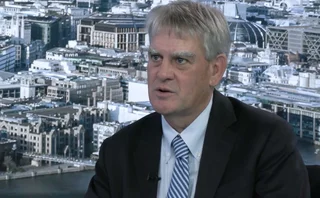
Commodity research house of the year, Asia: Societe Generale

Societe Generale has applied quantitative analysis to positioning dynamics, which have become particularly important for markets such as crude oil, which have been range-bound for large periods of 2017. So says the bank’s managing director, global commodities strategist and head of research Asia-Pacific Mark Keenan, who believes the technique will remain effective well into next year.
“The expectancy is for a floor in oil prices as a function of Opec now controlling output,” he says. “The recent period of price weakness started with the growth in shale oil production out of the US, which naturally acts as a cap to any material upside. The biggest challenge is then to work out what that range looks like, how big it is, and the behaviour of prices when they approach the bottom and the top of it. One of the most effective ways of doing that is by looking at positioning profiles.”
Much of the bank’s research focuses on speculative players’ positioning profiles. Recently, many speculative players have had to work more aggressively in range-bound markets where their upsides and downsides are hemmed in. That’s led them to take bigger positions, which allows researchers at Societe Generale to extrapolate price dynamics with greater accuracy.
“By tracking specific aspects of how these profiles change you get a very clear indication of what the vast majority of the market participants are doing, which we can then translate into helping our clients on the corporate side that are looking to manage their hedging more effectively, for example,” he says.
The bank constructs market insights for clients by systematically scrawling through a huge amount of information. Not all of the information comes from what might be considered traditional sources.
It seems to be the case now that the market is moving away from accepting a black-box model or a closed study in some way, that clients would have to trust to use and don’t fully understand
Mark Keenan, Societe Generale
“We have algorithms at the bank that look at about 30,000 different sources of information: blogs, newspapers, channels, media and so on,” Keenan explains. “We can tap into that and look at all the number of articles written over a week that talk about hedge fund or speculative positioning, for example.”
Utilising these and other resources – including the bank’s well-celebrated research team – Societe Generale has established its weekly newsletter, Commodity Compass, and its sister publication Commodity Compass Positioning Analytics. Both are published from the bank’s Asian offices but have generated worldwide audiences.
Within the publications and elsewhere, the bank presents five robust commodity positioning models: the overbought/oversold model, which identifies commodities that are oversold or bought according to specific metrics; dry-powder analysis, in which a model is applied to assess the amount of speculative activity there is in a different market; the mismatch indicator, built to isolate mismatches in sentiment; the hedge fund profitability indicator, which pulls together commodity hedge fund performance; and a specific set of Commitments of Traders equations, in which the bank has reverse-engineered the Commodity Futures Trading Commission’s COT report to isolate unique positions.
The bank has also developed macro-economic risk models such as the Principal Component Analysis, which is a statistical tool that allows the research team to break down commodity price returns and isolate the major explanatory variables, and a new type of cross-sectional relative strength indicator to help understand how the shape of the forward curves in the oil market might evolve.
“It seems to be the case now that the market is moving away from accepting a black-box model or a closed study in some way, that clients would have to trust to use and don’t fully understand,” says Keenan. “What we have done here with these very transparent, very robust indicators is to show how we think about it, how it’s made, and how you can optimise it as you see fit.”
The flexibility of the tools allows the bank to reach out to new customers and repurpose ideas to fit the tailored approach different firms are asking for.
“Whether you are running a refinery or a pension fund you are going to have different trading objectives,” says Keenan. “It’s a tool that’s the point, and it should be an inevitable part of your trading day, in a very small capacity, but adding some measurable value to what you do. That’s what we try to do with our clients in this environment, and it’s working.”
Only users who have a paid subscription or are part of a corporate subscription are able to print or copy content.
To access these options, along with all other subscription benefits, please contact info@risk.net or view our subscription options here: http://subscriptions.risk.net/subscribe
You are currently unable to print this content. Please contact info@risk.net to find out more.
You are currently unable to copy this content. Please contact info@risk.net to find out more.
Copyright Infopro Digital Limited. All rights reserved.
As outlined in our terms and conditions, https://www.infopro-digital.com/terms-and-conditions/subscriptions/ (point 2.4), printing is limited to a single copy.
If you would like to purchase additional rights please email info@risk.net
Copyright Infopro Digital Limited. All rights reserved.
You may share this content using our article tools. As outlined in our terms and conditions, https://www.infopro-digital.com/terms-and-conditions/subscriptions/ (clause 2.4), an Authorised User may only make one copy of the materials for their own personal use. You must also comply with the restrictions in clause 2.5.
If you would like to purchase additional rights please email info@risk.net
More on Awards
Collateral management and optimisation product of the year: CloudMargin
Delivering the modern blueprint for enterprise collateral resilience
Flow market-maker of the year: Citadel Securities
Risk Awards 2026: No financing; no long-dated swaps? “No distractions,” says Esposito
Pricing and analytics: fixed income – Quantifi
Quantifi delivers high-performance, transparent and adaptable pricing and risk analytics for fixed income and credit markets
Derivatives house of the year: Citi
Risk Awards 2026: Rev up, RWAs down, as US bank gets back on track (with added XiNG and XiP)
Technology vendor of the year: SS&C Algorithmics
Risk Awards 2026: From cloud, to chips, to maths tricks – vendor getting more out of existing tech
SS&C Algorithmics: winner’s interview with Curt Burmeister
SS&C Algorithmics wins three categories in this year’s Markets Technology Awards in addition to Technology vendor of the year at the Risk Awards
Best vendor for system support and implementation: Murex
Murex wins Best vendor for system support and implementation at the Markets Technology Awards 2026
Pricing and analytics: cross-asset and structured – Murex
Murex wins Pricing and analytics: cross-asset and structured at the Markets Technology Awards 2026 thanks to its MX.3 platform







